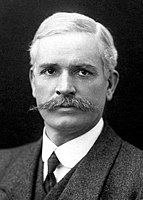| |||||||||||||||||||||||||||||||||||||
All 75 seats in the House of Representatives 38 seats were needed for a majority in the House 18 (of the 36) seats in the Senate | |||||||||||||||||||||||||||||||||||||
|---|---|---|---|---|---|---|---|---|---|---|---|---|---|---|---|---|---|---|---|---|---|---|---|---|---|---|---|---|---|---|---|---|---|---|---|---|---|
| Registered | 2,760,216 | ||||||||||||||||||||||||||||||||||||
| Turnout | 1,955,723 (73.49%)[a] ( | ||||||||||||||||||||||||||||||||||||
| |||||||||||||||||||||||||||||||||||||
 Results by division for the House of Representatives, shaded by winning party's margin of victory. | |||||||||||||||||||||||||||||||||||||
| |||||||||||||||||||||||||||||||||||||
The 1913 Australian federal election was held in Australia on 31 May 1913. All 75 seats in the House of Representatives, and 18 of the 36 seats in the Senate were up for election. The incumbent Labor Party, led by Prime Minister Andrew Fisher, was defeated by the opposition Commonwealth Liberal Party under Joseph Cook, marking the second time an Australian Prime Minister was defeated at an election. The new government had a majority of just a single seat, and held a minority of seats in the Senate.[1] It would last only 15 months, suffering defeat at the 1914 election.
The 1913 election was held in conjunction with six referendum questions, none of which were carried. According to David Day, Andrew Fisher's biographer, "it was probably the timing of the referenda that was most responsible for the disappointing election result" for the Labor Party.[2]
Cite error: There are <ref group=lower-alpha> tags or {{efn}} templates on this page, but the references will not show without a {{reflist|group=lower-alpha}} template or {{notelist}} template (see the help page).
- ^ Senate results, 1913 election
- ^ David Day (2008). Andrew Fisher: Prime Minister of Australia. Fourth Estate. p. 279.

